The Q2 aircraft in my garage was designed to be efficient—most speed for the lowest fuel burn. To begin with, the designers made it small. It barely seats two people and a little baggage. There is room for a small VW engine and a little fuel. As designed, the plane is capable of 140 mph cruise speeds and might reach 180 mph at maximum effort. These are remarkable numbers for only 65 hp.
The plane barely debuted when builders clamored for a bigger engine. It’s great with 65 hp, so what could it do with 100? After much continued development and the installation of a Continental O-200, the plane demonstrated 200 mph top speeds with a cruise of 175 or so—all this while burning around five gallons per hour. Throttled back to 120 mph, the plane travels nearly 45 miles per gallon, matching the best automobiles at nearly twice the speed.
Almost 1000 kits were sold before the company folded. A few hundred became flyable. Many more still sit in garages and shops throughout the land—like mine. You see, that question still nags at me: If it can do that on 100 hp, what could it do on 120 or more? I know, it’s probably at the point of diminishing returns already, and why reinvent the proverbial wheel?
The rotor comfortably nestled in its toroidal chamber. No valves, lifters, cams or timing chains. In theory, fewer parts means less chance of failure.
For me, the story began with an outright rejection of the VW. Not that it’s a bad engine, I just never liked them in airplanes. I appreciate and trust the Continental O-200, on the other hand, and selected the Q200 airframe with that engine in mind. That is, until I saw the price. A decent used O-200 sells for just under $10,000—two thirds of my total allotted budget for the project, and the engine design is over 50 years old. In an effort to bring reality to the cheap/practical airplane pipe dream, I bypassed the O-200 in search of an engine of comparable reliability and perhaps greater horsepower, at a much cheaper price. Looking back, this has been vastly more difficult than I thought at the beginning.
A peripheral intake above and slightly modified exhaust port below. Peripheral ports almost double the horsepower at the expense of a rough idle.
On the Hunt
Shopping for a suitable engine is fascinating. After reading everything William Wynne posted online about the Corvair conversion, I became somewhat intrigued, especially in regards to how that engine compares favorably to the O-200. Discussing my newfound interest with a local mechanic found him pleading with me to find something else. He spun a long tale of endless fights with his Corvair automobile, said he would barely risk driving it to work, called it a bunch of colorful names, and told me certain death awaited me if that engine ever found its way onto an airplane. I didn’t like the VW; he really hated the Corvair!
Further investigation brought me to the AeroConversions VW. I loved the idea of a big box of parts and instructions to build my own engine. It looked terrific, seemed at least several steps above the original Revmaster engines in the Q2, and made a claimed 80 hp. Additionally, the AeroVee would not increase the weight over the original engine. Maybe 80 hp would be enough? A phone conversation with the owner of a beautiful Sonex in Logan, Utah revealed a problem. Two big people, hot day, 6000-foot density altitude, and he felt pleased to be climbing 300 fpm. He said that 80 hp is about all I could ever expect out of the engine, too. Although the Q2 is a bit smaller and perhaps lighter than a Sonex, it appeared my goal of 1000 fpm climb would not be possible with that engine.
Then I found a terrific engine coming out of Europe called the Gemini diesel. It burns jet fuel, weighs about the same as an O-200, and makes 120 hp. My excitement lasted until the price sent me running the other direction. With the exchange rate on the euro, that engine would double my total budget all by itself.
I looked at several more engines, all either too heavy, too expensive, or too dubious for serious consideration. The Mazda Rotary, for example, promised great potential for power and reliability, but weighed almost twice what the little Q200 airframe was designed to carry.
At this point, I became somewhat resigned to coughing up money for an O-200 and inflating the overall budget for the airplane.
Eureka!
A short time later, a single-rotor Mazda conversion came up for sale. The engine had been custom built, specifically for mounting on a Q2. In fact, the engine was mounted to a Q2 airframe that was offered with it. After a brief negotiation, I bought the engine and reduction drive, for $2300, well within budget, and a claimed 120 hp, to boot. The seller bragged the engine, as installed, weighed less than 200 pounds—about the same as an O-200.
My project proceeded rapidly for a while after. Then, after installing the propeller (an Ivoprop), I noticed that light downward pressure on the spinner could lift the tailwheel off the ground. Things were not as light as they seemed. I continued with the installation, building intakes, plumbing, radiator, and oil cooler, very curious all the while to see it run.
With the tail weighted down, the engine coughed, spat, and began a fitful idle that shook the airframe into soft focus. After less than a minute, the exhaust pipe shattered, and the engine mount cracked from the vibration. Although initially elated to see it work, I felt dismayed at the fact that it worked quite poorly. At the very least, I would have to tear the engine down to see what caused the vibration. Pulling it free of the firewall and dangling the whole mechanism from a scale verified my suspicions—it weighed 273 lbs, way too heavy to use in the airplane!
The engine weighs 168 pounds at this point. Oil cooler, radiator, fluids, and prop will send it just north of 200 pounds, and it will produce about 140 horsepower.
Throwing Good Money after Bad
My dismay turned to brooding. This cycle has repeated itself many times since. Hope with the project becomes excitement, then elation, then dismay and a grumbling return to square one. At this point, the O-200 would cost $12,300 due to my foray into alternative engines.
I decided to throw good money after bad, figuring money spent so far still left room for Experimental development, and to be honest, I felt somewhat attached and intrigued by the little rotary engine. Piece by piece, noting the weights of each component, I dismantled the engine as it hung on the scale.
It is important to note that I have no experience building engines. Tracy Crook, of Real World Solutions, sells a nice conversion book for the rotary, and Paul Lamar, of rotaryengines.net, publishes a wealth of information to lend confidence to the neophyte (read foolish) builder. A great deal of reading and the enthusiastic comments of other builders involved with the discussion did much to build my confidence. Through these avenues I learned of several ways to shave weight and increase the power of a rotary engine.
Fourth radiator; third oil cooler, engine mount, and overhaul; second oil tank, ignition, gear reduction, rotor, bearings, etc. This is the final iteration, the author hopes!
Hope Springs Eternal
No way could my engine make 120 horsepower; the intake ports were untouched. In the Mazda RX-7, a two-rotor engine produces 150 hp, or 75 hp per rotor. My inexpensive single-rotor engine weighed nearly 50 percent more than an O-200, and might make 25 percent less power—if it were running well. Fortunately, increasing the power of a rotary engine is as simple as changing the ports. I decided to peripheral port the engine and hired Jeff Dodridge, a machinist and rotary enthusiast, to make it happen.
Jeff began milling the center housing and stopped short. My housing came from a very early model of the engine and would not allow an intake of the usual 2-inch diameter without cutting into some critical hardware. He offered to sell me a newer housing with the machining already completed, and I accepted at once. The new housing looked terrific, but did not quite match the cast iron end plates. I replaced these anyway, with aluminum end plates manufactured by Racing Beat, of California. The new end plates shaved 30 pounds off the engine weight, but cost an additional $3000.
Assembling the new parts revealed several subtle changes throughout the engine. Nothing else fit together. Even the toroidal chamber of the center housing had been changed over the years as Mazda sought to improve the engine from my original model. As such, I needed a new rotor, seals, oil pump, water pump, and engine mount. I sent the rotor and all spinning components to Mazdatrix in California for rotational balancing. They found the old parts to be way out of balance and suggested that was the source of the initial vibration. Upon assembling the engine block, the only part retained from the original engine was the shaft.
Moving ahead, Jeff altered the reduction gear to accept thrust bearings while I looked for every opportunity to shave off weight. I hadn’t had so much fun in the shop for many years. Despite all the frustration and cost, the learning curve in selecting parts and building the engine was a blast. When fully assembled, the basic engine, mount, reduction gear and prop weighed 188 pounds. With radiator, oil cooler and fluids, the 200-pound figure looked quite doable. Power output is yet to be determined, but with the peripheral port and about 8200 rpm, 140 hp might be possible. I began to get excited.
No geysers of oil, billowing steam, exploding parts, or shooting flames, all parameters normal. The engine is very smooth—cue the delight!
Will It Work?
After a few test runs in the shop, I tied the plane in the driveway and advanced the throttle. It ran smoothly, but seemed to hesitate at higher rpm. There seemed to be some errors in the oil pressure sender and several discrepancies throughout the engine monitoring system. I throttled back after a few minutes to check the engine directly. It idled for a moment, then the prop came to a sudden, jolting halt. Cue the dismay.
Disassembly revealed a complete lack of oil pressure and a couple of destroyed bearings. Thankfully, the shaft and expensive housings were undamaged. I rebuilt the engine again with improved bearings and retainers designed to improve oil flow at high rpm. Approaching the next test run with great caution, we lubricated the engine with a hand pump as it ran, and still noted zero oil pressure. We went through the whole oil supply system, verified the senders with a voltmeter, then noticed a fool’s mistake. I’d plumbed the entire output of the oil pump into a dead end. This is easier to do than you’d think, and replumbing the system required a slight modification to the engine mount. At last, I felt ready for another try.
With the engine idling smoothly, I was elated to note an oil pressure of 90 psi—about right for a rotary, when a geyser erupted from the propeller speed reduction unit. The low-pressure seal at the back of the PSRU blew out, and high-pressure oil sprayed the starter ring gear. Like the proverbial substance hitting the fan, oil found its way past the wingtips, all over the driveway, and spattered the wall of my garage. I could have been the poster boy for “grease monkey.” Some quick replumbing involving a restrictor, and an alternate drain path for the PSRU prevented the seal from blowing again. The next run shot a geyser of oil straight up, about 8 feet, out the oil tank breather. I had to relocate the breather and buy a lot more oil. At least the problems could be solved, and I found great enjoyment in this, as well. Even more fun than collecting and assembling parts was the thrill of seeing them work together and make some noise.
Subsequent testing revealed the cooling system to be inadequate. I bought Paul Lamar’s book, How to Cool Your Wankel, and studied it carefully. Essentially, my radiator had to double in size, and sure enough, the engine temperatures stabilized. What a delight to watch the temperatures rise with increasing power, then cool again as the power is reduced. I fixed several leaks, adjusted ignition circuits, fuel flows, and generally tinkered until satisfied that the whole thing looked workable. In the end, I’ve spent enough to buy an O-200 anyway, but I’ve had a lot more fun and learned a great deal more than simply bolting on another engine.
Of course, the engine won’t fit under the old cowling, so I have to make a new one—but that’s the subject of another article.


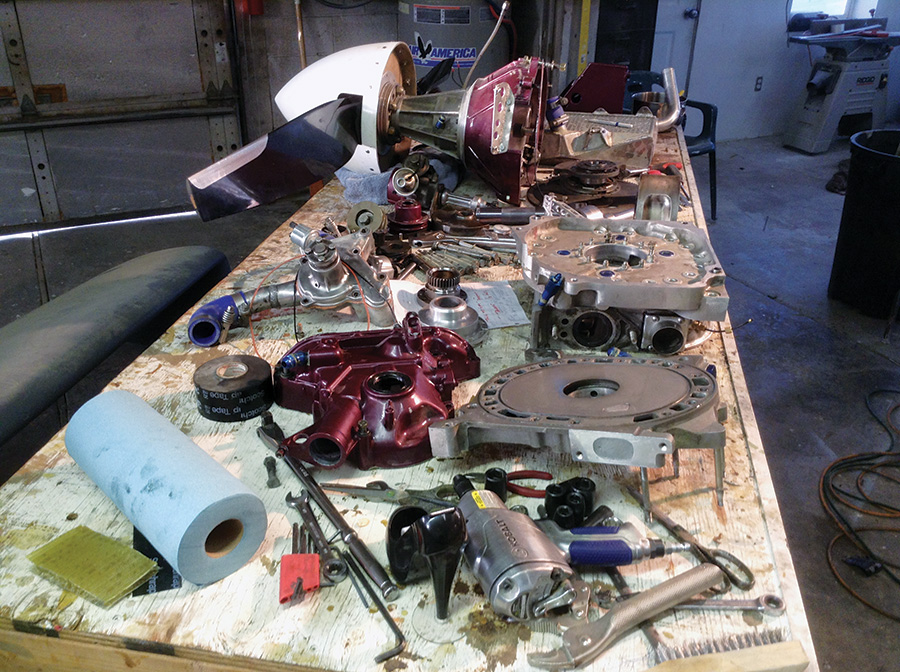
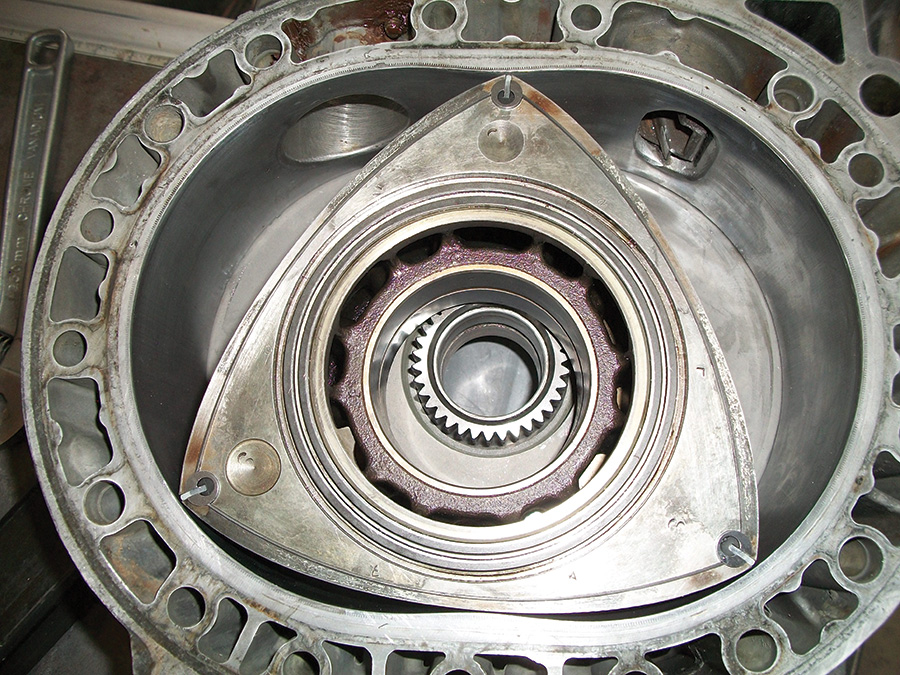
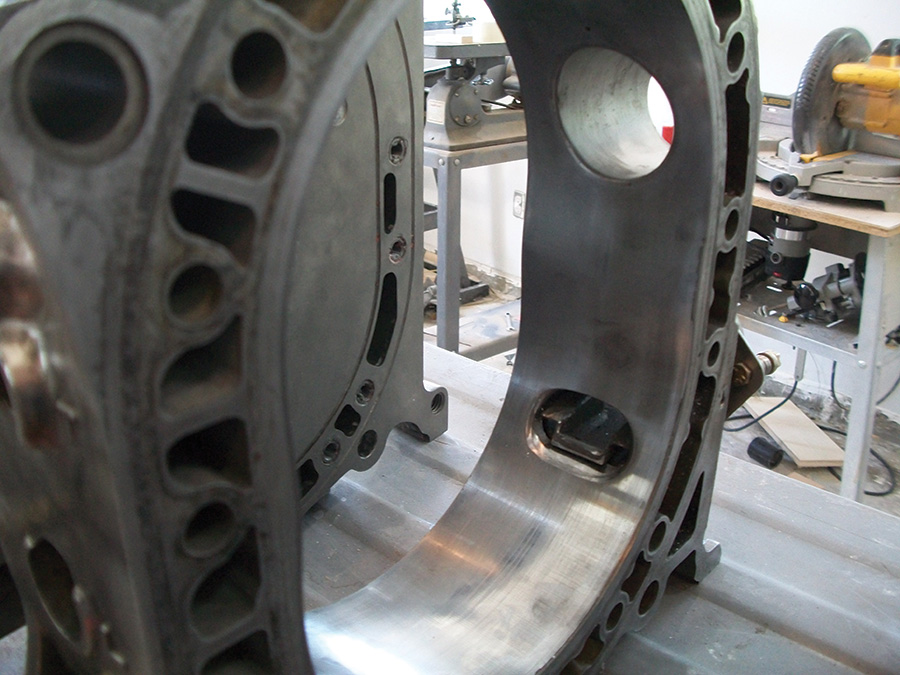


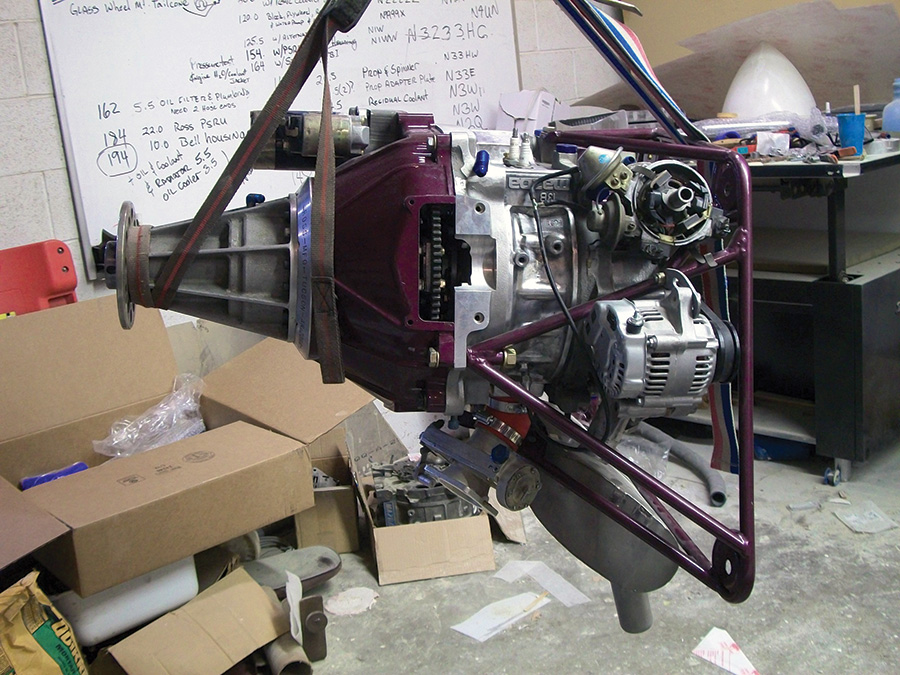
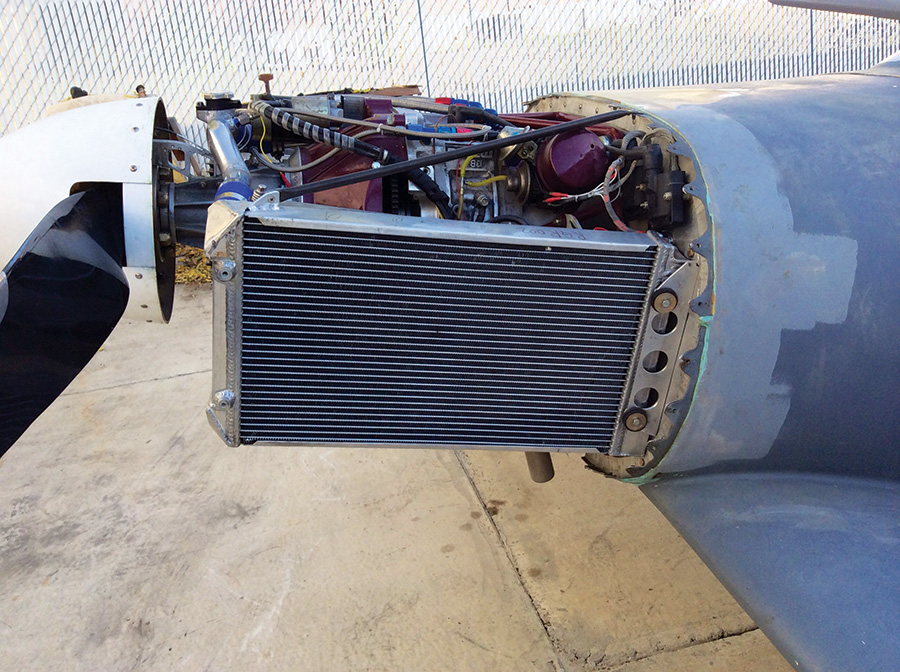





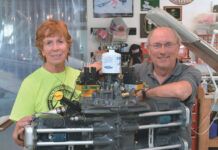
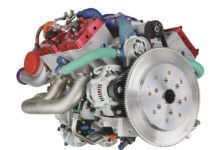
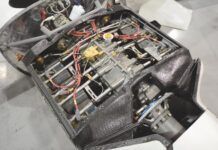
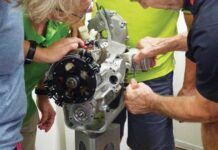

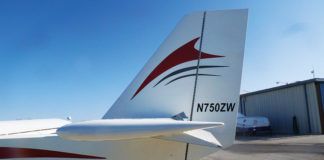
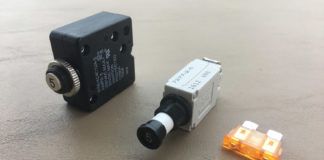
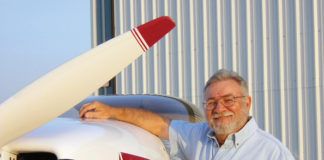
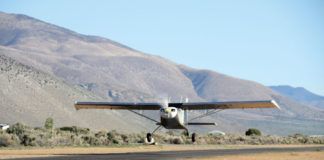
Mr. Bjork,
I have been searching for a suitable engine for my Sonex. The first one I built had a Jabiru 3300 and did not produce the advertised power. I have pretty much settled on a rotary because of the power to weight ratio. When I saw this article, I began salivating. The 140 to 160 hp is right in the ballpark.. I Installed a Midwest Aero Engines single rotor 50hp in a Challenger so I have some experience with them. I would GREATLY appreciate any dimension data on your engine to gauge if it will fit and how much shoehorning if any I would have to do. Really the best article I have found on a single rotor and I thank you for writing it.
Dave Augustine
New Port Richey, FL
[email protected]
727-277-4799
Scrap the Frankenstein engine and buy a proper aero-engine. you’ve had a lot of fun but you’re betting your life on something that’s operating well outside of it’s original design parameters and it’s highly modified to boot. Both the Bugatti 100p project and Rutan Pond-Racer are good examples of this lesson.
Also the additional weight will increase wing-loading and reduce glide characteristics in a dead stick scenario, which seems incredibly likely with your chosen power plant. Be smart.